
Do you know how to say the names of different animals in Korean?
Learning animal words in a foreign language is a fun way to expand your vocabulary. Because animals are such a hot topic of discussion, having these words up your sleeve can also help you engage in conversations with native speakers.
In this article, we’ll introduce you to 88 animal words in Korean. This includes animal names, important animal body parts, and Korean expressions that mention animals.
Let’s go!
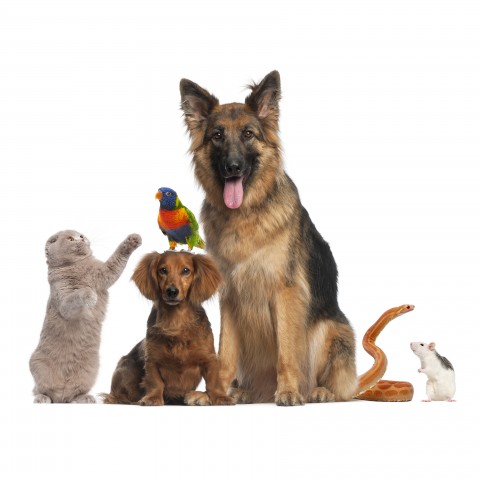
 Table of Contents
Table of Contents
- Pets
- Farm Animals
- In the Wild / Forest / Safari (Land Animals)
- In the Ocean (Aquatic / Marine Animals)
- Bugs and Insects
- Birds
- Animal Body Parts
- Animal-Related Proverbs and Idioms
- How KoreanClass101 Can Help You Learn More Korean
1. Pets
Research conducted in 2020 shows that the most popular pets in South Korea are dogs (83.9%), followed by cats (32.8%) and fish (2.2%). When asked about their favorite animals (and not just pets), Koreans indicated an interest in tigers, Eurasian eagle-owls, and Japanese tree frogs.
Here are the names of common pets in Korean:
| 강아지 | (gangaji) | “puppy” |
| 개 | (gae) | “dog” |
| 고양이 | (goyangi) | “cat” |
| 햄스터 | (haemseuteo) | “hamster” |
| 토끼 | (tokki) | “rabbit” |
| 친칠라 | (chinchilla) | “chinchilla” |
| 새 | (sae) | “bird” |
| 금붕어 | (geumbungeo) | “goldfish” |
| 뱀 | (baem) | “snake” |
| 애완동물 | (aewandongmu) | “pet” |
| 애완견 | (aewangyeon) | “pet dog” |
Example:
A: 좋아하는 애완동물이 뭐예요?
A: Joahaneun aewandongmuri mwoyeyo?
A: “What’s your favorite pet?”
B: 저는 햄스터를 좋아해서 지금 여섯 마리 키우고 있어요.
B: Jeoneun haemseuteoreul joahaeseo jigeum yeoseot mari kiugo isseoyo.
B: “I like hamsters, and currently have six.”
- ★ You can visit our free vocabulary list Animal Names to learn the names of even more animals, along with their pronunciation!
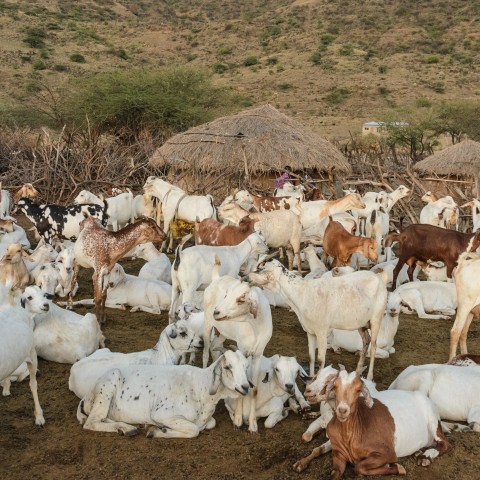
2. Farm Animals
Fun fact: Cows, pigs, and chickens are the three main farm animals in South Korea.
| 소 | (so) | “cow” |
| 돼지 | (dwaeji) | “pig” |
| 닭 | (dak) | “chicken” |
| 양 | (yang) | “sheep” |
| 알파카 | (alpaka) | “alpaca” |
| 오리 | (ori) | “duck” |
| 말 | (mal) | “horse” |
| 염소 | (yeomso) | “goat” |
| 당나귀 | (dangnagwi) | “donkey” |
| 거위 | (geowi) | “goose” |
| 개구리 | (gaeguri) | “frog” |
| 멧돼지 | (metdwaeji) | “wild boar” |
| 송아지 | (songaji) | “calf” |
Example:
A: 우리 할아버지 농장 운영하시는데, 구경하러 갈래? 소랑 돼지 엄청 많아.
A: Uri harabeoji nongjang unyeonghasineunde, gugyeonghareo gallae? Sorang dwaeji eomcheong mana.
A: “My grandfather runs a farm. Did you want to go and see? There are so many cows and pigs.”
B: 응, 좋아!
B: Eung, joa!
B: “Yes, sure!”
- ★ Do you want to learn what sounds animals make in Korean? Check out Sounds That Animals Make to hear their onomatopoeia for yourself!
★ You can also visit our lesson Farm Animals in Korean to learn more relevant words.
★ For advanced learners, we recommend our lesson How Do You Feel About Animals in Zoos? You’ll get to hear about a Korean speaker’s trip to a zoo in Japan that caused her to question how she felt about caging wild animals.

3. In the Wild / Forest / Safari (Land Animals)
Fun fact: Did you know that the national symbol of South Korea is the tiger? There used to be tigers in Korea, but they’re now extinct.
You might also like to know that the national bird of South Korea is the Oriental magpie, and the national flower is the Hibiscus syriacus.
Want to learn more? Check out the page National symbols of South Korea on Wikipedia!
Now, here are the names of common wild animals in Korean:
| 사슴 | (saseum) | “deer” |
| 사자 | (saja) | “lion” |
| 호랑이 | (horangi) | “tiger” |
| 원숭이 | (wonsungi) | “monkey” |
| 하마 | (hama) | “hippo” |
| 코뿔소 | (koppulso) | “rhino” |
| 얼룩말 | (eollugmal) | “zebra” |
| 코끼리 | (kokkiri) | “elephant” |
| 여우 | (yeou) | “fox” |
| 곰 | (gom) | “bear” |
| 늑대 | (neukdae) | “wolf” |
Example:
A: 한국의 상징 동물이 뭔지 알아?
A: Hangugui sangjing dongmuri mwonji ara?
A: “Do you know what the national animal of Korea is?”
B: 응, 호랑이잖아.
B: Eung, horangijana.
B: “Yeah, it’s a tiger.”
- ★ Do you want to learn a bit more about popular animals in Korea? Then make sure to check out this fascinating blog post from Canada’s Olympic Network!
★ You can also visit our lesson Safari Animals in Korean to learn the words for safari animals.

4. In the Ocean (Aquatic / Marine Animals)
Considering that South Korea has roughly 1500 miles of coastline, it should come as no surprise that we enjoy a diverse population of marine life.
Here are the names of common aquatic animals in Korean:
| 돌고래 | (dolgorae) | “dolphin” |
| 물고기 | (mulgogi) | “fish” |
| 고래 | (gorae) | “whale” |
| 문어 | (muneo) | “octopus” |
| 오징어 | (ojingeo) | “squid” |
| 조개 | (jogae) | “clam” |
| 물개 | (mulgae) | “seal” |
| 해파리 | (haepari) | “jellyfish” |
| 게 | (ge) | “crab” |
| 상어 | (sangeo) | “shark” |
| 바닷가재 | (badaggajae) | “lobster” |
| 펭귄 | (penggwin) | “penguin” |
| 송어 | (songeo) | “trout” |
| 물개 | (mulgae) | “seal” |
| 거북이 | (geobugi) | “turtle” |
- ★ Do you want to learn more marine animal names in Korean with examples? Then please check out our vocabulary list Marine Animals & Fish or our lesson Marine Animals in Korean.
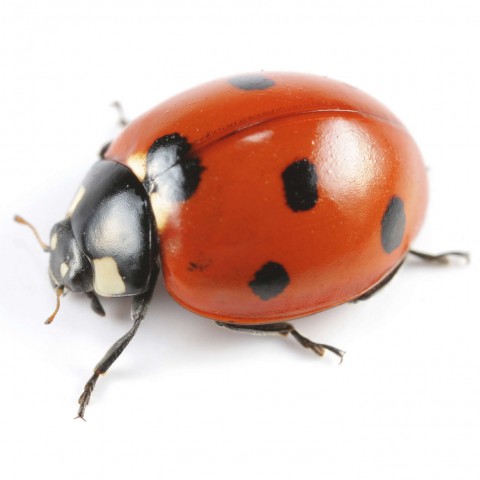
5. Bugs and Insects
While we may not like bugs all that much, they do comprise an essential part of the world’s ecosystem. Let’s take a look at what the most common ones are called in Korean:
| 벌 | (beol) | “bee” |
| 거미 | (geomi) | “spider” |
| 달팽이 | (dalpaengi) | “snail” |
| 나비 | (nabi) | “butterfly” |
| 잠자리 | (jamjari) | “dragonfly” |
| 무당 벌레 | (mudang beolle) | “ladybug” |
| 메뚜기 | (mettugi) | “grasshopper” |
| 사마귀 | (samagwi) | “mantis” |
| 물 거미 | (mul geomi) | “water spider” |
| 애벌레 | (aebeolle) | “larva” |
| 바퀴벌레 | (bakwibeolle) | “cockroach” |
| 개미 | (gaemi) | “ant” |
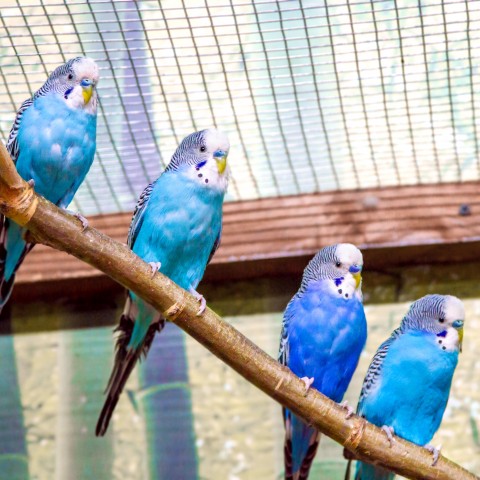
6. Birds
Did you know there are 583 species of birds in South Korea? While we can’t list all of them here, we’ve included below the names of common birds in South Korea and around the globe:
| 독수리 | (doksuril) | “eagle” |
| 홍학 | (honghak) | “flamingo” |
| 왜가리 | (waegali) | “heron” |
| 암탉 | (amtak) | “hen” |
| 올빼미 | (olppaemi) | “owl” |
| 공작 | (gongjak) | “peacock” |
| 망아지 | (mangaji) | “foal” |
| 새끼 양 | (saekki yang) | “lamb” |
| 비둘기 | (bidulgi) | “pigeon” |
| 칠면조 | (chilmyeonjo) | “turkey” |
| 황새 | (hwangsae) | “stork” |
| 백조 | (baekjo) | “swan” |
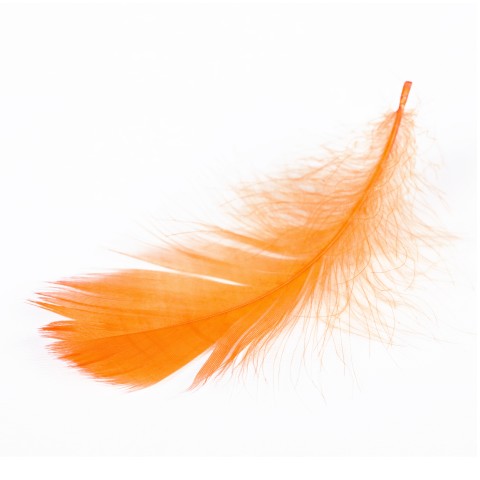
7. Animal Body Parts
Now that you’ve learned the names of many different animals in the Korean language, let’s briefly look at what we call the most important animal body parts.
| 부리 | (buri) | “beak” |
| 깃털 | (gitteol) | “feather” |
| 뿔 | (ppul) | “horn” |
| 말굽 | (malgup) | “horse” |
| 입마개 | (ipmagae) | “muzzle” |
| 발톱 | (baltop) | “claw” |
| 이빨 | (ippal) | “teeth” |
| 꼬리 | (kkori) | “tail” |
- ★ Would you like to learn the sounds animals make in Korean? Then visit our lesson 10 Animal Sounds!

8. Animal-Related Proverbs and Idioms
Korean animal proverbs and idioms are easy to understand, and Koreans use them every day. Here are just a few of them for you.
| 하룻강아지 범 무서운줄 모른다 | Harutgangaji beom museounjul moreunda. | “A day-old puppy is not afraid of a tiger.” |
| This means that an inexperienced person doesn’t know when to be cautious. The meaning can be either positive or negative, depending on how one uses it. | ||
Example:
A: 뭐? 신입사원이 매니저한테 소리를 질렀다고?
A: Mwo? Sinipsawoni maenijeohante sorireul jilleotdago?
A: “What? The new employee yelled at the manager?”
B: 그러니까… 하룻강아지 범 무서운줄 모른다더니..
B: Geureonikka…harutgangaji beom museounjul moreundadeoni..
B: “I know right… A day-old puppy is not afraid of a tiger…”
| 고래싸움에 새우 등 터진다 | Goraessaume saeu deung teojinda. | “When whales fight, the shrimp’s back breaks.” |
| This means that when two big powers fight against each other, the little bystander is the victim. | ||
Example:
A: 오늘 아침 어머니와 아버지가 싸우시는데 그 앞에 서 있다가, 공연히 고래싸움에 새우 등 터질 뻔했어.
A: Oneul achim eomeoniwa abeojiga ssausineunde geu ape seo itdaga, gongyeoni goraessaume saeu deung teojil ppeonhaesseo.
A: “My mother and father were fighting this morning, and I was standing in front of them, and the shrimp’s back almost broke in the fight.”
B: 그러게 왜 앞에 서 있었어?
B: Geureoge wae ape seo isseosseo?
B: “So why were you standing in front of them (in the first place)?”
| 우물 안 개구리 | umul an gaeguri | “a frog in a well” |
| The English equivalent is “a big fish in a small pond,” but the Korean idiom has more of a negative connotation. | ||
Example:
우물 안 개구리가 되지 않으려면 기존에서 벗어난 사고 방식이 필요하다.
Umul an gaeguriga doeji aneuryeomyeon gijoneseo beoseonan sago bangsigi piryohada.
“If you don’t want to be a frog in the well, we really want to change things.”
| 소 귀에 경 읽기 | so gwie gyeong ikgi | “reading the Bible to a cow” |
| The English equivalent is “to fall on deaf ears.” This means that even though you try your best to explain something to an ignorant person, they will never understand. | ||
Example:
요즘 어린 학생들은 어른이 지적을 해도 듣지 않아. 정말 소 귀에 경 읽기야.
Yojeum eorin haksaengdeureun eoreuni jijeogeul haedo deutji ana. Jeongmal so gwie gyeong ikgiya.
“These days, young people don’t listen even when adults point things out. It feels like reading the Bible to a cow.”
| 호랑이도 제 말하면 온다 | Horangido je malhamyeon onda. | “Even the tiger will come when it’s mentioned.” |
| The English equivalent is “Speak of the devil.” | ||
Example:
호랑이도 제말하면 온다더니, 앨리스가 여기 왔어.
Horangido je malhamyeon ondadeoni, alliseuga yeogi wasseo.
“Speaking of the devil. Alice is here.”
9. How KoreanClass101 Can Help You Learn More Korean
You’ve just learned 88 animal words in Korean, as well as a few popular animal-related expressions.
What’s your favorite animal? Do you know its name in Korean?
If you would like to continue learning the Korean language, create your free lifetime account on KoreanClass101.com today! We make learning fun and provide our students with a number of effective and entertaining resources: free vocabulary lists, audio and video lessons, and much more! You can also head over to our YouTube channel to learn Korean while watching fun videos.
Happy learning!










